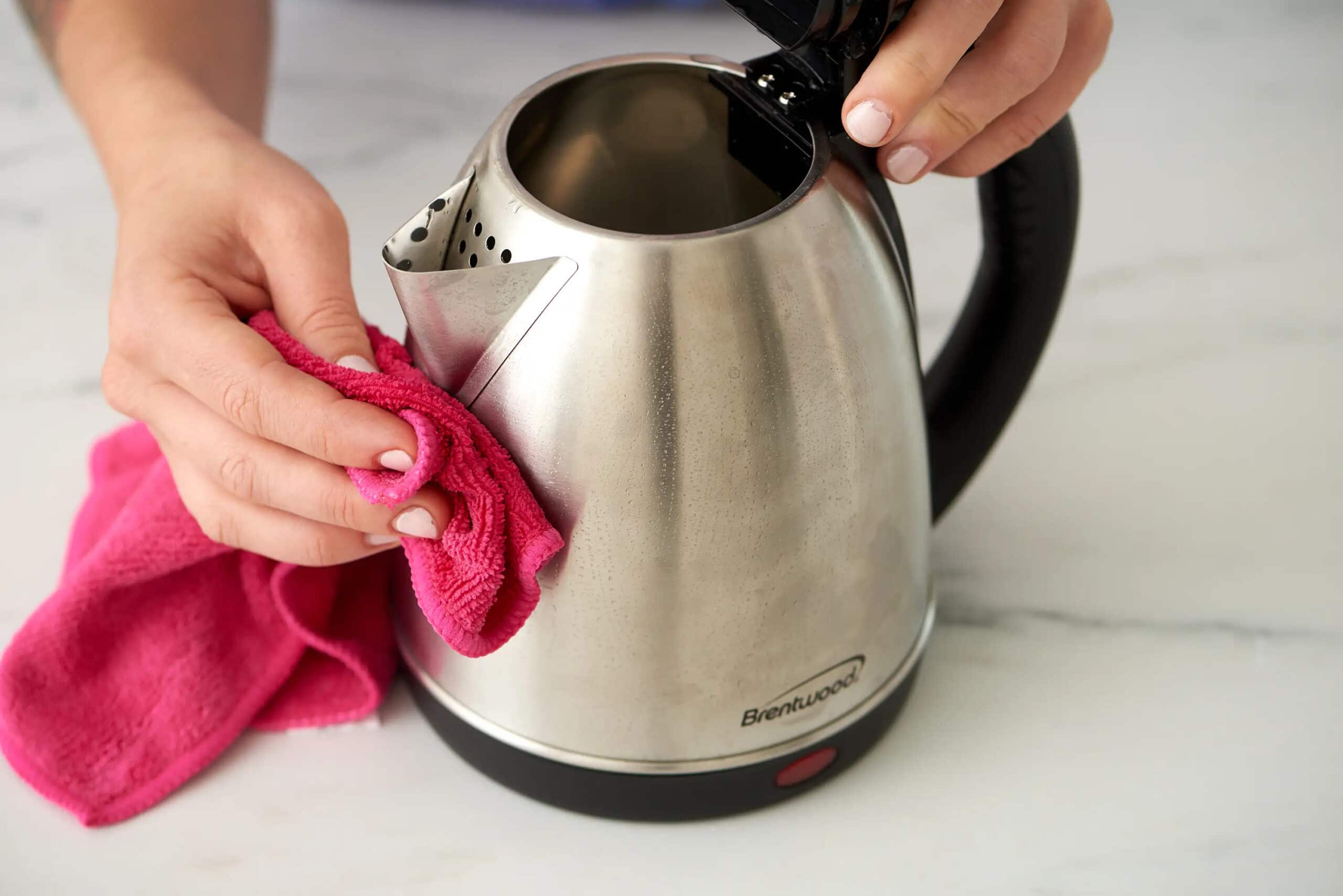1.2K
You should not only clean a kettle regularly for hygienic reasons. Limescale residues that accumulate over time also impair its function. You can clean it thoroughly with home remedies and without much effort.
Cleaning the kettle: Regular maintenance is important
A kettle is a practical household appliance that is used often and with pleasure. Accordingly, the appliance can also get dirty once in a while.
- The outside of a kettle can easily be cleaned with a damp cloth. It is important to disconnect the appliance from the mains first.
- Fingerprints are easy to see on a stainless steel kettle. As a rule, these also disappear by wiping with a damp cloth. If necessary, use a little washing-up liquid in addition.
- You can also wipe the inside of the kettle with a damp, soft cloth.
- Make sure that no water is left standing in the kettle. On the one hand, germs can spread quickly in the warm and humid environment, and on the other hand, the appliance calcifies more quickly.
Remove limescale from the kettle: These home remedies help
Cleaning a kettle also involves regularly descaling the appliance. You don’t have to resort to chemicals to do this. There are numerous home remedies that can dissolve the limescale.
- Vinegar: Vinegar is an excellent descaler. Mix vinegar essence with water in a ratio of 1:2 and put the solution in the kettle. Let the vinegar water boil briefly when the limescale has disappeared.
- Baking powder: Baking powder is also a true all-rounder in the household. Fill the kettle with water and dissolve a packet of baking powder in it. Heat the water and let the solution work for about half an hour.
- Acetylsalicylic acid: The painkiller known as ASA or also aspirin contains acid that dissolves the lime in the kettle. Fill the kettle with water and put two or three of the tablets in it.
- Once the tablets are dissolved, turn on the kettle and let the water boil. Afterwards, this home remedy must also be left to act for about half an hour.
